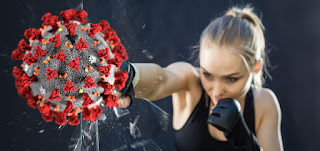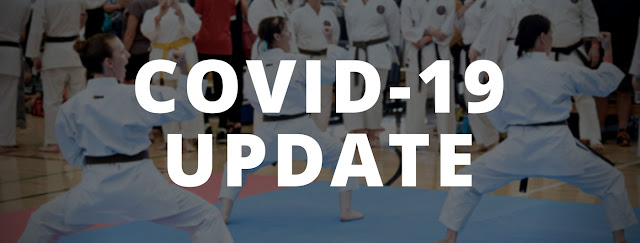Re-Opening Your Martial Arts Business and the 4 Things You Need to Know after Covid-19!
Most martial arts schools are currently closed because of the global pandemic caused by COVID-19. Right now, it’s hard to tell when everything will officially open and whether things will go back to normal. More than likely, martial arts schools will re-open post-COVID-19 shut down with new restrictions and guidelines. You can get a jump on the new ways to keep your students safe by following some or all of the tips outlined below.
Keeping your students safe should be your number one priority when you re-open, so don’t skirt around the details and take every safety precaution you can.
Testing
Testing for COVID-19 is still limited in many areas, so until your business has access to tests, or your students can do tests at home, you can use a thermometer to check for a fever. The virus can easily spread without people showing symptoms, but typically someone will have flu-like symptoms if they have the virus and are contagious. If a student shows up with flu-like symptoms or registers a fever with your thermometer, they should not train that day and should go home. Using a contactless thermometer is the easiest way to get an idea of who might have the virus.
A fever is not the only symptom. Students might display other COVID-19 symptoms like the following. If someone comes to practice showing any of these symptoms or has had them in the last 14 days, they should not train.
- · Fever
- · Cough
- · Shortness of breath
- · Chills
- · Fatigue
- · Headache
- · Sore throat
- · New loss of taste or smell
You can check your staff and students for these symptoms at the door. Place a staff member at the front door with a checklist and a thermometer. Every student who tries to enter needs a temperature check, and they need to answer a series of questions about any symptoms they have or have had within the last 14 days. You also need to know whether they’ve been around anyone who was COVID-19 positive.
Ensure that your staff and students practice social distancing during this process and practice social distancing throughout the training sessions. This counts for both time on the mats and in the locker room. How you social distance depends on the structure and size of your martial arts school, so plan ahead before each class.
Beyond taking temperatures and checking for flu-like symptoms, you should take four other steps before and after your martial arts school re-opens post-COVID-19 shut down.
1. Social Distance
As mentioned above, social distancing is a necessity when your martial arts school re-opens post-COVID-19 shut down. Before you start giving any classes or training sessions, you need to have planned out how students and staff can safely social distance from each other. Social distancing can reduce the rate of transmission and infection.
While it’s challenging to social distance in martial arts because everyone is in constant movement, you can designate certain areas for training that are separated by 6 feet in every direction. How much room you have left for training is determined by the size and structure of your martial arts school, but many martial arts schools have more than enough room to have numerous 6-foot areas for students to train.
You can cordon off the training areas by marking the no-go zones with strips of tape. This helps your students easily see where they can and can’t train during a session. Start with one student per training area, and then you can consider moving to two people per training area if your town does not have a rise in infection for a few weeks. If you pair two students, they should only work with each other for the entire session to avoid cross-contamination. This reduces the likelihood of one student infecting everyone in the class.
After a few weeks of being open, you might find out that a student tested positive for the virus. If this happens, you’ll know that you used the right protocols to prevent that student from infecting the entire class. Their ability to spread the virus was limited to those they trained with, and you will have to notify everyone that the student may have come in contact with.
When you’re dividing off areas for training and marking them with tape, you’ll get a feel for how many students you can have per class. The max number of people is determined by how many 6-foot areas you have available that follow proper social distancing guidelines.
Once you know how you’re going to mark off training areas on your mat space and how many students you can have in a class at one time, you need to work on capacity control.
Make sure that you don’t end up with too many students showing up for one class by using scheduling software like BlackBeltCRM Martial Arts Software that limits signups. Students should only be able to see and sign up for sessions that have not yet reached capacity. This also allows students to decide whether they want to join a larger class or smaller for their safety.
For more information on social distancing, visit the CDC’s website here.
2. Sanitation and PPE
If your martial arts school is in the US, check whether the disinfectant you already use is on the list of disinfectants that can kill the coronavirus. The Centers for Disease Control also have detailed cleaning instructions on their website for how best to clean and kill the virus. You shouldn’t limit yourself to only cleaning the mats. Every commonly used and touched surface needs to be disinfected after every class. Frequently touched surfaces are the easiest way for the virus to spread among your students. Schedule time for cleaning after every class and before the next group enters the martial arts school.
Make sure there is a hand sanitizer that everyone can use as they enter the front door. You can also ask that every student go immediately to the bathroom to clean their hands with soap and water for at least 20 seconds.
Every student should have clean hands and also clean uniforms. Let everyone know that they are required only to wear freshly laundered uniforms that are less likely to have the virus on them. Insist that they follow this practice.
Another guideline is to ask students to wear masks. Masks can stifle breathing during intense exercise, but they are a good way to protect students from each other. There are exercise-specific masks that students can use that include small release valves to reduce overheating inside the masks. Students can also wear gloves, but gloves should never be used in place of soap and water.
3. Communication and Education
A good start to successfully re-open is keeping your members informed every step of the way. Make sure your students know when and how you plan to re-open and what safety measures you’re putting in place to keep them safe.
Make sure your members know that you’re not permanently closed and that you plan to re-open when allowed. Don’t disappear off the face of the planet and stop communication with your members and students. If you stop communicating, students might think you are closed for good and ask that their payments are stopped, which is not ideal for any martial arts school.
You might decide to run online classes during the lockdown. If you do, continue to communicate through that medium regularly. You can reassure your members that online classes are a temporary measure and that you plan to re-open soon.
As soon as you know what safety measures you’re implementing, tell your members about your plans. Educate your students about the new social distancing areas, hand washing, temperature checks, and anything you else you are putting in place like capacity limits. The sooner your students know about and understand the new processes at the martial arts school, the smoother the transition when you re-open.
Announce loudly, clearly, and often that students should not show up if they have symptoms or have had symptoms within the past 14 days. There are diseases and viruses that share the symptoms of COVID_19, but you can’t take any risks during this crisis. It’s better to be safe than sorry, and most of your students will understand your reasons. Members should always wait for one to two weeks to come back to the martial arts school after their symptoms are gone.
You can further educate your students by offering educational materials like pamphlets on COVID-19 symptoms and signs to look out for. Put up posters in visible areas and point out the materials to each student.
You can add educational materials to your martial arts school like this sample poster. You can adjust the poster for your business.
4. Protecting Your Members
 COVID-19 is riskier to some members of the population over others. The elderly and people with underlying conditions are more likely to contract the disease caused by SARS-CoV-2, COVID-19. These people are also more likely to end up in the hospital or needing increased medical care because they are COVID-19 positive.
COVID-19 is riskier to some members of the population over others. The elderly and people with underlying conditions are more likely to contract the disease caused by SARS-CoV-2, COVID-19. These people are also more likely to end up in the hospital or needing increased medical care because they are COVID-19 positive.
Underlying conditions that increase the likelihood of COVID-19 complications include high blood pressure, obesity, and diabetes. Other people at risk are those with chronic lung disease, including asthma, and those with serious heart conditions are immunocompromised, have chronic kidney disease, or chronic liver disease.
Older people over the age of 60 are at an increased risk, but people over 50 are also in danger.
Advise your students that are in the high-risk group not to come to class immediately after you re-open. Ask them to wait until it is even safer for them to rejoin the martial arts school and to see that there is no rise in infection in your town after stay-at-home orders are lifted.
When you re-open your martial arts school, you should also protect your members and your staff by having students sign a second waiver form specifically for COVID-19. This protects your business from liability should one student infect other students.
How to Run a Martial Arts School in a Post-COVID-19 World
 Let’s face it; things aren’t getting easier any time soon. COVID-19 is here to stay for a while longer, but there are things you can do to both re-open your martial arts school and keep your students safe. Make sure that you follow the tips above and the guidelines outlined by the federal government and your state and local governments.
Let’s face it; things aren’t getting easier any time soon. COVID-19 is here to stay for a while longer, but there are things you can do to both re-open your martial arts school and keep your students safe. Make sure that you follow the tips above and the guidelines outlined by the federal government and your state and local governments.
We’re going to get used to the new measures, but it will take some time. Make sure your students have all the information they need to make informed decisions about when to come to class and when not to. Also, make sure that your martial arts school is more than prepared for re-opening post-COVID-19 shut down before you start scheduling classes.

